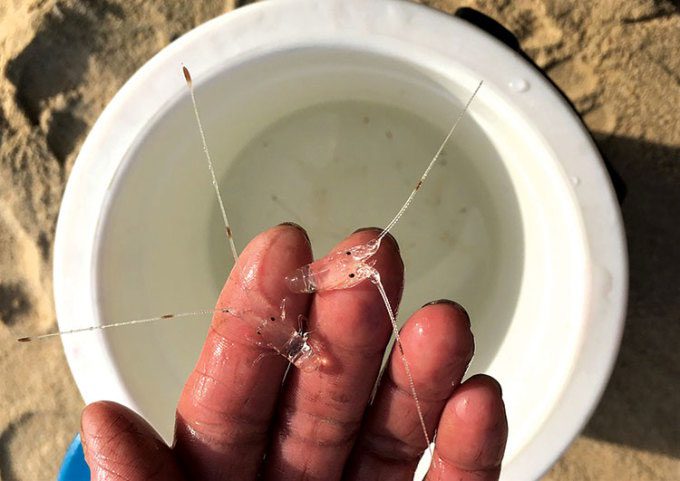In the coming year, if food and environmental issues are addressed, Vietnam could successfully produce commercial-grade lobster seeds.
At the conference on Solutions for Developing Industrial Marine Farming held on November 25, Mr. Võ Văn Nha, Deputy Director of the Aquaculture Research Institute 3, announced that Vietnam is researching the production of white spiny lobster seeds. This is a state-level project assigned to the Institute to lead.
Vietnam began researching the production of white spiny lobster seeds over 13 years ago but halted in 2010 when the seeds were at stage 5 after 89 days of cultivation. To qualify as commercial-grade lobster seeds, the larvae must reach stage 12.

Wild-caught lobster seeds. (Photo: Vietnam Fisheries Magazine)
In 2018, the Aquaculture Research Institute 3 resumed its efforts. “As of November this year, our research team has produced spiny lobster larvae up to stage 9, after more than 120 days of cultivation,” Mr. Nha stated. According to existing literature, including that from Australia, these larvae typically require up to 150 days.
The current survival rate of the larvae is 0.5%, while the state project requires a survival rate of 0.001%. Mr. Nha expressed optimism about this rate, noting that no country in the world has successfully produced commercial spiny lobster seeds.
However, Mr. Nha mentioned that the research faces challenges as the larvae die when transitioning to stage 10. “The team is focusing on identifying the causes and preparing for a new phase,” he said.
The research team is currently considering two potential causes; the first is a “special nutritional requirement” during the molting phase of the larvae. The second possible cause could be water quality, as the environment of the rearing tanks may become detrimental after four months of cultivation.
From now until November 2024, the state project is set to conclude, and Mr. Nha hopes that by addressing issues related to food and the environment, success can be achieved within a year.
Deputy Minister of Agriculture and Rural Development Phùng Đức Tiến announced that they will collaborate with the Aquaculture Research Institute 3 to invite both domestic and international experts to help resolve these challenges.
Lobster seeds currently rely heavily on imports from Indonesia, the Philippines, Myanmar, Sri Lanka, and Singapore. In 2022, Vietnam imported 81 million seeds, with 59 million imported in the first half of 2023.
The current difficulty lies in the fact that some countries have banned the export of lobster seeds, leading to an unstable supply. Meanwhile, the supply of wild-caught lobster from the central coastal regions only meets a small portion of the demand for aquaculture.
Spiny lobsters are classified in Group II of Vietnam’s list of endangered and rare aquatic species (according to Appendix II, Decree 26/2019/ND-CP). Currently, both green lobsters and spiny lobsters are key export items. In Vietnam’s lobster export markets, China accounts for 98-99%, while other markets such as Thailand, Singapore, Hong Kong, and Taiwan account for 1-2%.
Specifically for the Chinese market, Vietnam has 46 establishments exporting lobsters to this market (out of a total of 57 establishments packaging live seafood for export to China). In the first nine months of 2023, lobster exports to China reached over 95 million USD, a decrease of more than 46% compared to the same period in 2022.


















































